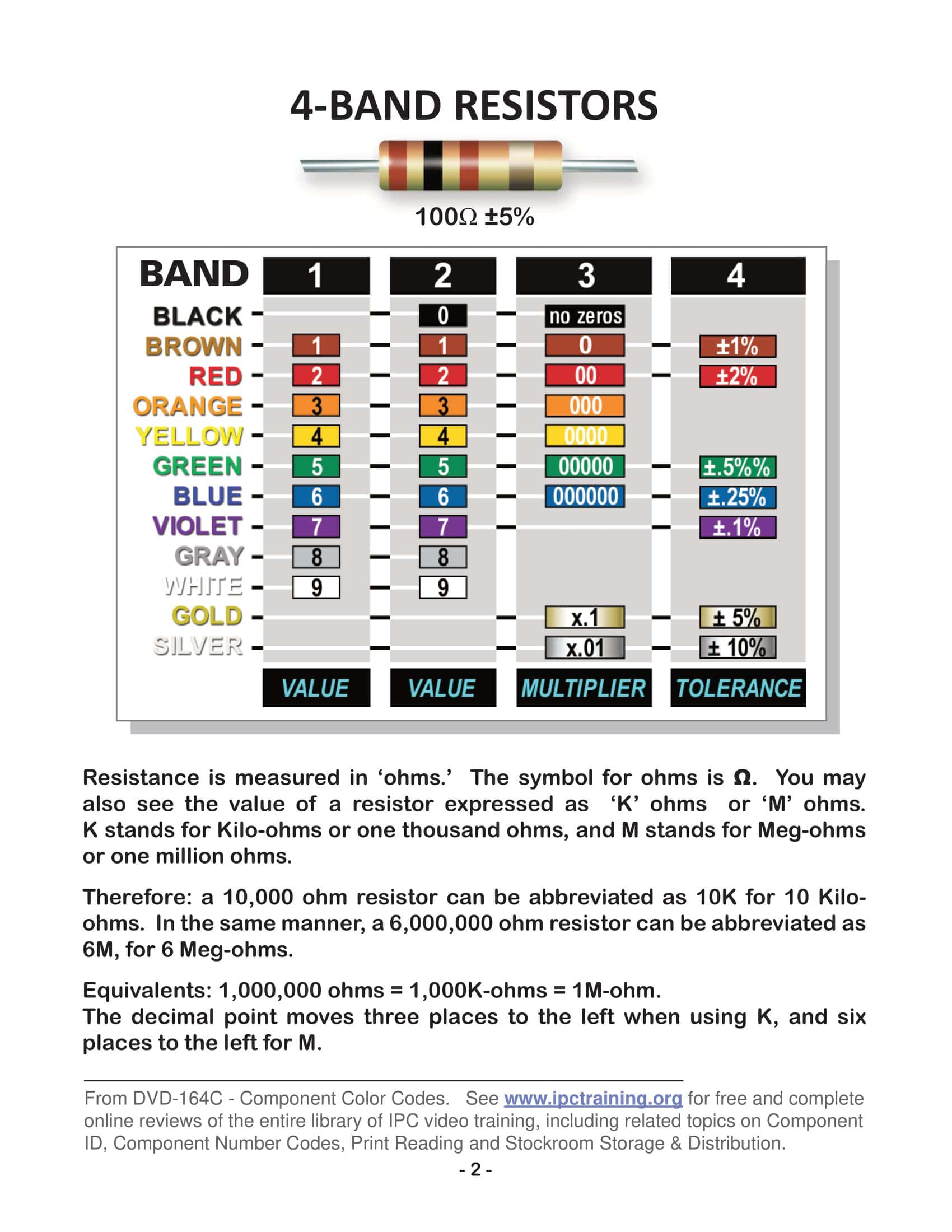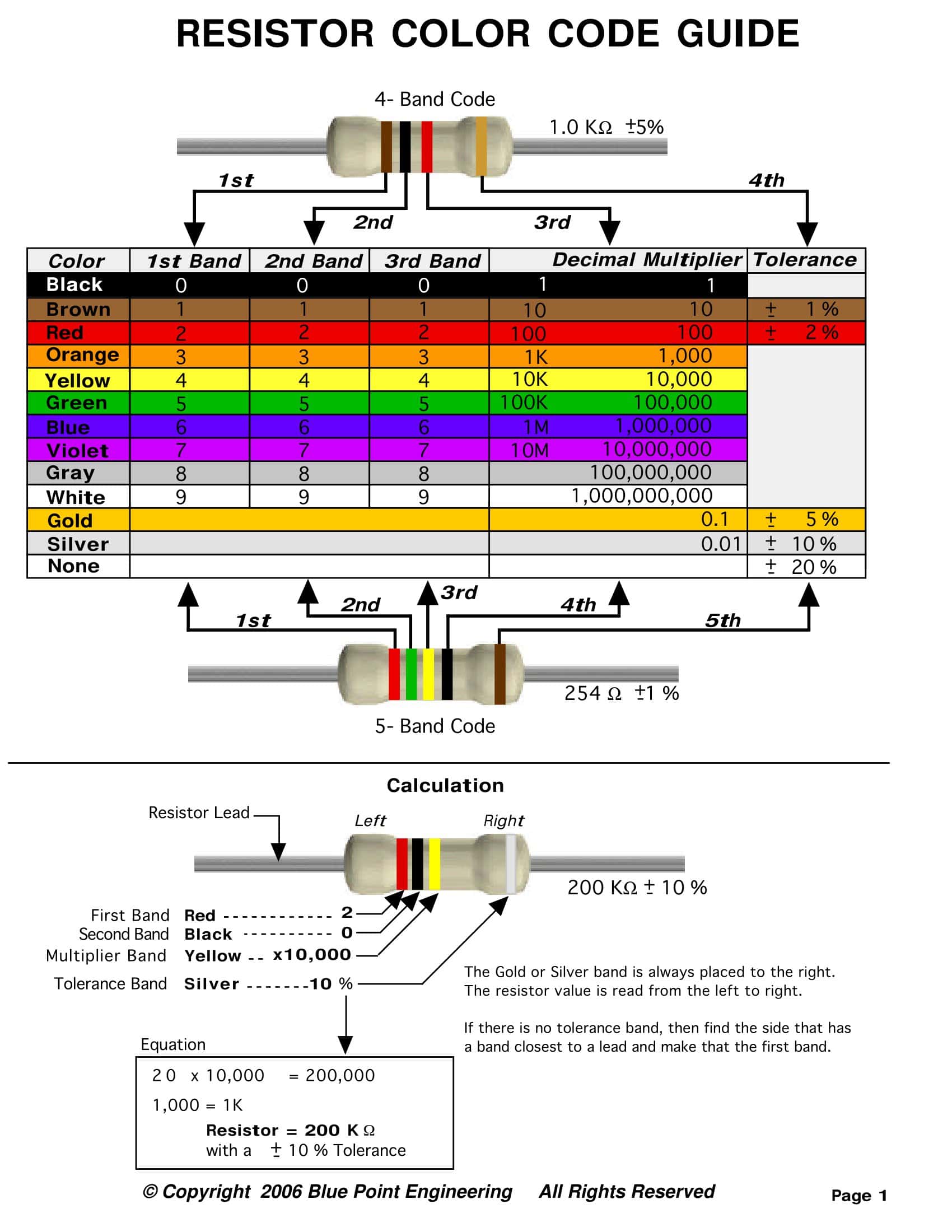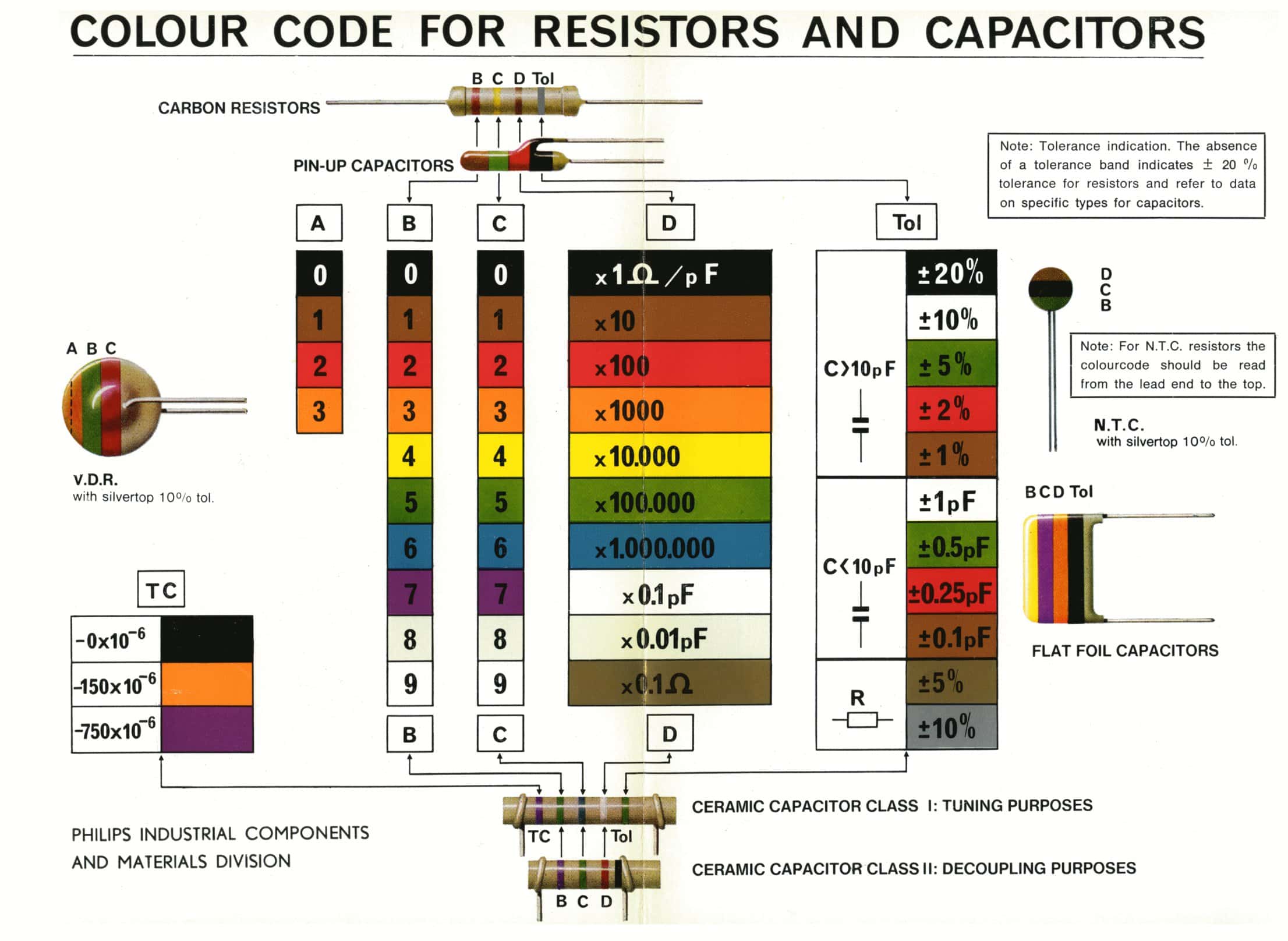Choosing the correct resistor and placing it correctly is as critical to an electronics project as good soldering. The Printable Resistor Color Code Chart matches the color bands on the resistor body to their digit, multiplier, and tolerance equivalents so you can decode values in seconds. If you’re asking, “What value is red–violet–orange–gold?”—you’ll find the answer here, whether you’re in a makerspace, at a parts counter, or in a university lab. TypeCalendar offers 40 high‑resolution printable Resistor Color Code Charts for different use cases available in PDF, PNG, and JPG.

Table of Contents
4‑Band / 5‑Band / 6‑Band Coding
- 4‑Band → 2 digits + multiplier + tolerance. Ex: Red‑Purple‑Orange‑Gold ⇒ 27 kΩ ± 5%.
- 5‑Band → 3 digits + multiplier + tolerance (common in precision metal film resistors). Ex: Yellow‑Purple‑Black‑Brown‑Brown ⇒ 4.70 kΩ ± 1%.
- 6‑Band → 5‑band plus temperature coefficient (tempco) band. In printable tables, the ppm/°C equivalent of the 6th band is given with a separate legend.
- Tolerance shortcut: Brown 1%, Red 2%, Green 0.5%, Blue 0.25%, Purple 0.1%, Gray 0.05%, Gold 5%, Silver 10%, None 20%. The multiplier side is marked in large font on the printable chart with the order of Gold ×0.1, Silver ×0.01, Black ×1, Brown ×10 … White ×10⁹.
Printable Resistor Color Code Charts
SMD Resistor Codes — 3-Digit, 4-Digit and EIA-96
Printable SMD Resistor Code Chart pages are included for chip resistors without color bands:
- 3‑Digit: The first two digits are significant, the last digit is the number zero. “103” → 10 kΩ. “R” means decimal (“4R7” → 4.7 Ω).
- 4‑Digit (1 %): First three digits significant, last digit multiplier. “1001” → 1 kΩ.
- EIA‑96 (1 %): 00–99 code + letter multiplier. In the printable table, the entire mapping list and sample solutions are in separate columns.
There are also clear example blocks for “000 = 0 Ω jumper” and R‑notation, reducing the risk of misreading.
Worked Examples — How to Read Tapes?
Read the resistance when the tolerance band is on the right (usually gold, silver or brown and slightly separated from the others).
- Red-Purple-Orange-Gold → 2-7-×1000 = 27 kΩ, ±5%.
- Brown‑Black‑Black‑Red‑Brown ⇒ 1‑0‑0 ×100 = 10 kΩ, ± 1%.
- Blue‑Gray‑Black‑Brown‑Red‑Blue (6‑band) ⇒ 6.8 kΩ, ± 2%, tempco value is read from the legend.
The TypeCalendar charts also show the nearest E‑series nominal (E12/E24/E96) next to each example. Hang the chart by your bench and the quick sanity check before measuring becomes effortless.
Formats and Print — Optimized for Printable PDF/PNG/JPG
This collection is available only in PDF, PNG and JPG. Printable PDF pages are prepared in A4 (EU/UK/AU/NZ) and US Letter (US/CA) sizes at 300 dpi; when printed with “Actual Size/100%”, the values and color legend come out as clear as a needle. Printable PNG/JPG images are high resolution (A4: 2480×3508 px, Letter: 2550×3300 px); you can read the bands up close on the phone with pinch‑zoom. Each file includes 25 mm and 1 inch calibration rods check the scale with a ruler after printing to ensure it is correct. Two themes are included: toner-friendly black‑and‑white printable and education-focused color printable, also available in a dark background variant suitable for screen use.
Common Pitfalls and Quick Tips
Determine the reading direction according to the tolerance band. Gold/Silver can be both a tolerance and a multiplier; cross-check in the table. The wattage is not read from the colors see the body length and data sheet. Pay attention to R‑notation and silver/gold multiplier combinations at very low values. In SMD codes, the letter “R” marks the decimal point (4R7 = 4.7 Ω).
Download and Post at Your Bench
Choosing the correct resistor the first time saves time and stops the error before it enters the circuit. Download the 40 HD charts from the TypeCalendar Resistor Color Code Chart collection now. Print the PDF and hang it on your board, save the PNG/JPG to your phone. 4‑band, 5‑band, 6‑band and SMD code tables in one package; tolerances, multipliers and E‑series references at your fingertips at a glance.








































![Free Printable Morse Code Charts [Numbers, Alphabet] 1 Morse Code Chart](https://www.typecalendar.com/wp-content/uploads/2023/09/Morse-Code-Chart-150x150.jpg)

![%100 Free Hoodie Templates [Printable] +PDF 3 Hoodie Template](https://www.typecalendar.com/wp-content/uploads/2023/05/Hoodie-Template-1-150x150.jpg)
